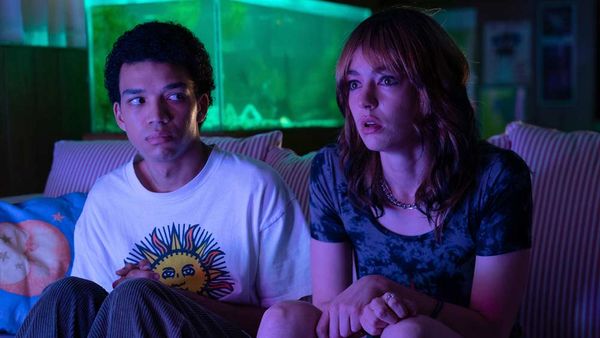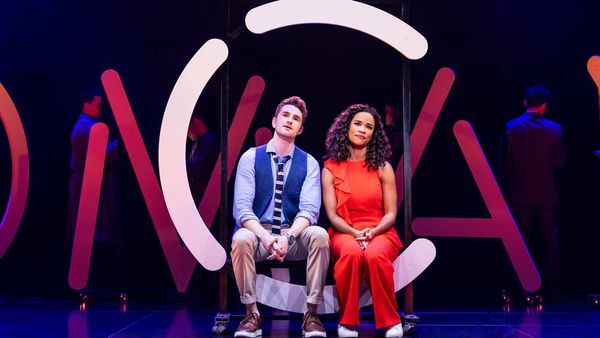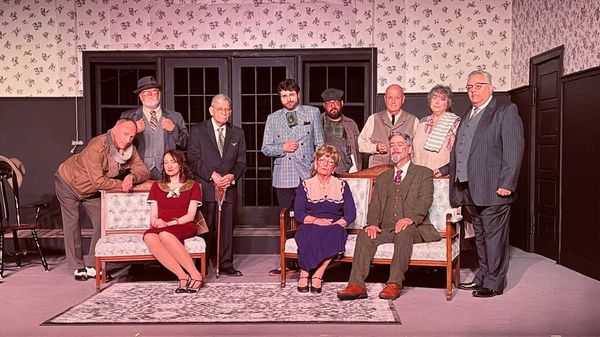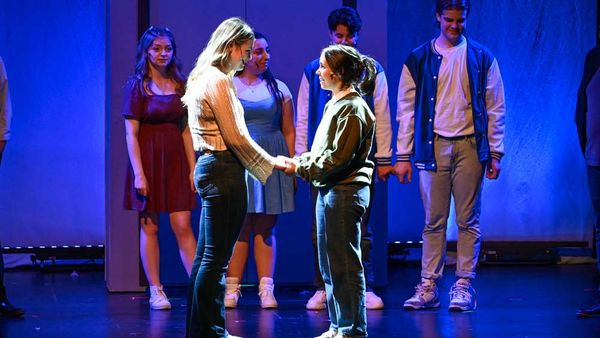March 19, 2013
A Raisin in the Sun
Kilian Melloy READ TIME: 7 MIN.
When Lorraine Hansberry wrote her seminal play more than half a century ago about an African American family seeking a better life, she drew on her own family's experience in trying to purchase a house in a white neighborhood. Little did she know that she was authoring a work that would stand as one of the great American plays.
For her title, Hansberry chose "A Raisin in the Sun," an evocative phrase that comes from "Harlem," one of the 91 poems in the Langston Hughes book "Montage of A Dream Deferred." Hansberry's play concerns a house in a white enclave in Chicago called Clybourne Park; in reality, her family sought to buy a house in a Chicago neighborhood called Washington Park, and faced opposition from the neighborhood's property owner's association, which sought to exclude blacks from the neighborhood.
The Huntington Theatre Company's production of "A Raisin in the Sun" runs concurrently with Speakeasy Stage Company's production of "Clybourne Park," across town at the Boston Center for the Arts. "Clybourne Park," by Bruce Norris, spends its first half filling in part of the story of "A Raisin in the Sun" -- you might, were you to be so bold (or insensitive to political correctness), call it the "white" part of the story. Norris uses a minor character from "A Raisin in the Sun," a white man named Karl Lindner from the Clybourne Park property owners' association, as a starting point and explores questions around the original play.
For example: Why would a white family living in an extremely race-conscious period of history sell their house to black buyers? Why would the asking price be low enough to enable a family living in a low-rent district to buy the property? And -- one of the most charged questions -- is pure race hatred the sole reason for neighborhood opposition to a black family moving into a white neighborhood, or are there economic reasons in play also? Can the two factors be disengaged, or are they impenetrably intertwined? What are the social consequences to pioneering steps by black families into white enclaves? Norris invents a cast of memorable characters and fleshes out the person of Linder, who proves to have his own ethnic complexities.
Norris mines comic and dramatic material alike from the questions he asks, before switching gears in Act II to look at what happens to a couple of generations after the Youngers move into Clybourne Park. The neighborhood is now predominantly black and a wave of young white professionals is starting to gentrify the place. What new tensions are in the air? What lingering social resentments remain in force?
The two works play off one another well, and Boston's theatergoers really ought to (yes, it is a moral imperative!) make good use of the chance to see both. That said, the plays could also hardly be starker in their contrasts. "Clybourne Park" is short (shorter by an hour than its predecessor), and given to a sharper brand of comedy and a more piquant stripe of dramatic impact. Norris' opus won the 2012 Tony for Best Play, and indeed the quality of the piece is not in doubt; but its essential qualities speak right to what contemporary audiences will, literally, sit still for when it comes to buying tickets to see live theater. Social questions are bandied about with all the abandon of a rugby match, and four-letter words fly. This is a play of its time: It reflects who we are today, and how our dialogue about race has (and has not) progressed.
"A Raisin in the Sun" may be a work from an earlier time, but its merits are the same now as they were then: Strong writing, a solid structure, complex characters, compelling conflict. This is a play that takes its time to set up relationships and underlying stresses between its characters: family matriarch Lena Younger (Kimberly Scott, nothing short of regal in the part) shares her home with son Walter (LeRoy McClain), his wife Ruth (Ashley Everage), and their son Travis (a role shared by Cory Janvier and Zaire White). Also living in the cramped quarters is Beneatha (Keona Welch), Lena's daughter, a bright young woman with the drive and smarts to go to medical school, if she can find some way of paying for it.
Others drift in and out of this cozy tenement home. Beneatha has two suitors; one of them is a college student from a rich family, George (Corey Allen), a go-getter who has a healthy libido, an ambitious air, and little time for knowledge except as a means to an end. He's obviously a poor fit for the inquisitive Beneatha, who is smart enough to place her focus on intellectual passions rather than physical. (There is a turn of events that reminds us of the era in which the play is set -- a time when a woman unprepared for a pregnancy faced the prospect of seeing her life derailed or, perhaps worse, visiting a back-alley abortionist with all the risks and potential horrors that entailed.)
Beneatha's other suitor is Joseph Asagai (Jason Bowen), an African man who has brought with him tales of the land from which he, like Beneatha's forebears, has originated. Asagai sparks Beneatha's imagination, and fuels a growing contempt for African Americans who surrender to the dominant white culture -- a mindset bewildering to Ruth and Lena, who see themselves not as Africans but as American women and good Christians to boot. (Beneatha's atheism is a point of serious contention within the household.) The sexually aggressive George does little to incite Beneatha's sexual interest, but the respectful, intelligent Asagai turns her on.
Not that any kind of courtship is easy in such a tiny apartment. At one point Lena walks in on Walter and Ruth having sex. It's a funny moment, the sort of awkward thing that happens in families and then is politely ignored, but there's a very serious reason why it's part of the staging. The play's central device boils down to a matter of living conditions, and director Liesl Tommy keeps that in mind; her direction piles the characters on top of one another almost all the time, and the set design by Clint Ramos has the apartment mounted on a giant turntable so that we can follow characters from room to room. Moreover, Ramos's design features walls made of slats, so that privacy is partial at best and there's only a porous barrier to draw around oneself in any quest for a little peace and quiet.
But those same slats allow glimmers of light and hope into the family's living situation. Lena has lived in this rented space for decades; now, by dint of her late husband's insurance money, the family has a chance to seek something better. Walter, who is a schemer and dreamer, wants to "invest" the money in a liquor store, a proposition that shocks Lena -- she would rather see a good portion of the money go to Beneatha's tuition bill, and the rest...
Well, what? Eventually, Lena determines that the bulk of the money will go toward a new home in a better part of town: A real house, rather than a cramped apartment with a shared bathroom at the end of the hall. But this decision, too, brings with it a host of fears, controversies, and possibilities both good and ill. It also brings a visit from Karl Lindner (Will McGarrahan) who offers to buy off the family, an offer that would solve a financial crisis at the cost of the Youngers' individual and collective personal dignity.
The cast is sublime. McClain embodies the agony of a man who can simply no longer wait for the world to offer him a fair chance. At one point, on his knees, crying out to the audience as he addresses the whole white world, McClain dents the fourth wall in a way resonantly similar to Teagle F. Bougere's performance in "Invisible Man" at the same venue earlier this year.
Everage brings strength and focus to her role as the wife, mother, and daughter-in-law who is, in many ways, the linchpin for the Younger family. Welch gives Beneatha the youthful suppleness of character to veer from the hard edges of youthful certainty to the wildly joyous energy of just being young. This production adds a character, unnamed and uncredited, whose presence is unobtrusive but brings a new level of dramatic meaning to the play. He does little other than observe -- but when he does interact with the rest of the cast, it's a moment that sends chills right down the spine.
Lap Chi Chu's lighting design is simply gorgeous; Broken Chord takes on the sound design with effective results. It all comes back to Tommy's cast and direction, though. This production is akin to looking through a keyhole into another time -- and into lives that, once seen, cannot be forgotten.
Kilian Melloy serves as EDGE Media Network's Associate Arts Editor and Staff Contributor. His professional memberships include the National Lesbian & Gay Journalists Association, the Boston Online Film Critics Association, The Gay and Lesbian Entertainment Critics Association, and the Boston Theater Critics Association's Elliot Norton Awards Committee.







